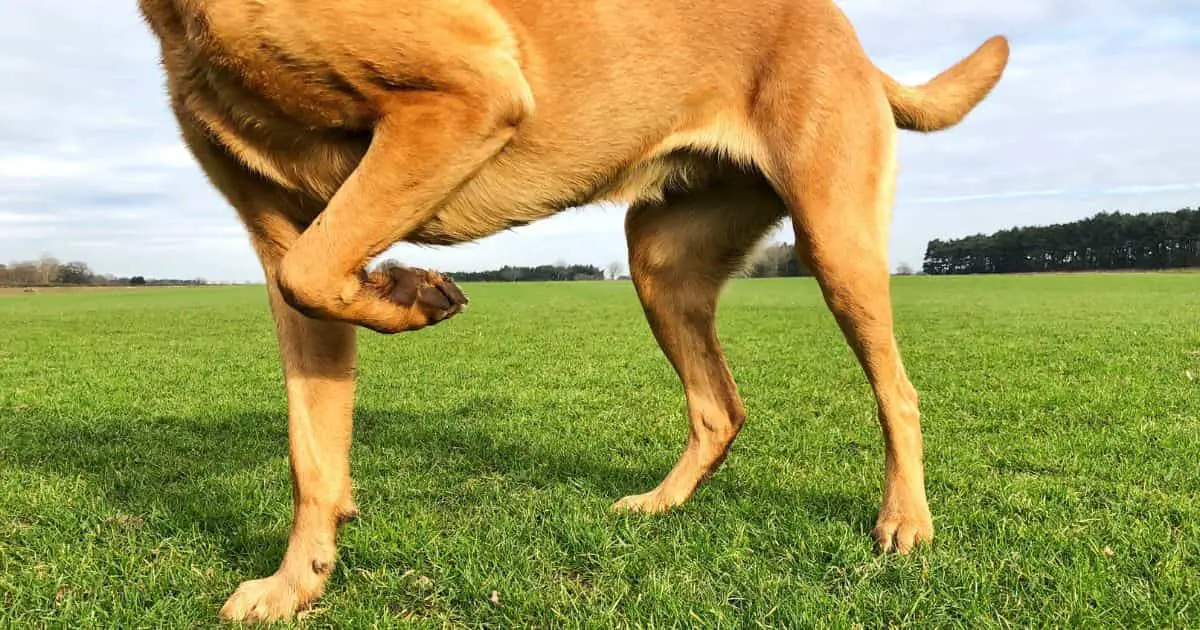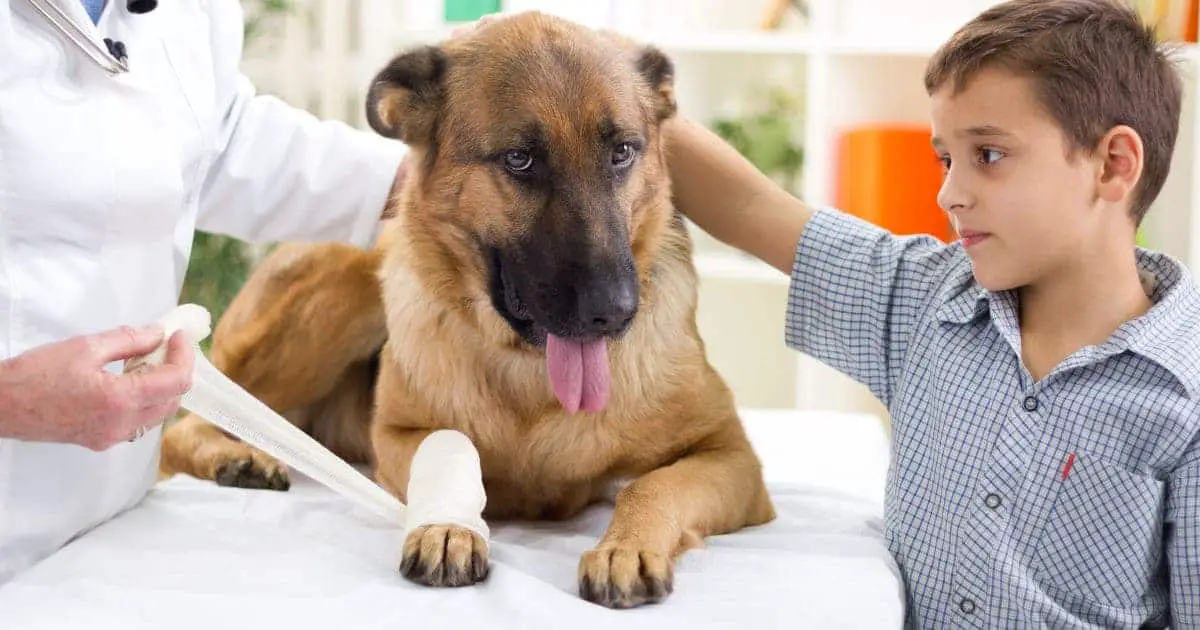As fellow pet parents, we know that your dog means the world to you. So when you notice your dog suddenly limping or more gradually limping in their movements, the alarm you feel is only natural.
But before you rush your adorable furry companion to the nearest emergency veterinary center, learning how to treat a limping dog at home might be worth a shot first.
While the cause of mild or severe dog limping might be very serious, more often than not, they tend to be common conditions that you can manage without having to make an appointment with the vet.
Here, we’ll be exploring the common reasons for limping in dogs, the treatments you can administer, and the best time to seek medical attention.
Limping in Dogs

Dogs limp due to a wide variety of reasons. Identifying these reasons is critical because they will determine the severity of the problem.
With this information, you can conclusively decide if this is something that can be handled at home with good treatment and a few days of rest or if you should seek emergency care for your pet at once.
The most obvious signs of limping in dogs are if they’re limiting their range of motion and applying weight management to favor the affected area. There are four other external signs and crucial symptoms that lameness in dogs can present. These include:
- A sudden drop in activity level and standing or sitting at an irregular angle.
- Refusal to participate in normal activities like walking and playing fetch that they normally enjoy.
- A reluctance to go up or down stairs.
- Physical signs of pain and distress when the affected limb is touched.
Major Factors That Can Trigger Limping or Lameness in Dogs
Swinging into action without having a clear idea of what you’re dealing with can cause your canine companion more unnecessary pain and discomfort. So, before getting into how you can give your dog pain relief at home, you must know the common causes of this condition.
Causative factors of lameness in dogs include:
Trauma or Physical Damage to the Paws and/or Limbs
This is arguably the most common cause of signs of lameness and limping in canines. A foreign body like a shard of broken glass or a splinter can inflict minor injury on your pet, causing them to limp instead of walk properly.
If the foreign body remains lodged in its paw or limb for long periods, it can cause infections, further worsening the sudden onset limping.
Similarly, wounds and burns can also trigger an acute limp in your pet. Insect stings and animal bites that open minor wounds and/or cause severe swelling have also been known to have the same effect.
Finally, broken bones, severe muscle soreness, shoulder injury, ligament sprains, ligament injuries (like a cranial cruciate ligament wound), muscle strains, dislocations, and nerve damage can make your furry companion limp as well.
Certain Joint Illnesses and Diseases
Another predominant cause of gradual or sudden lumps in dogs is diseases that affect their joints and musculoskeletal system. The onset of these illnesses can wreak severe havoc on the body of a canine. In turn, the animals try to compensate for this by limping.
A series of medical conditions have been confirmed to trigger this effect. Some of the well-known ones are intervertebral disk disease, hip dysplasia, and elbow dysplasia.
A joint disease that causes limping more often found in large and small breed puppies is osteochondritis dissecans. Also known as OCD, it stunts cartilage development in animals.
On the other hand, osteoarthritis is more commonly observed in older dogs. Chronic arthritis has been known to affect everything from the bones to the limbs and neck of canines.
Skin Infections
Several skin conditions can also cause your beautiful dog to limp. Some of the most common culprits here are skin infections that affect the paw. These include but aren’t restricted to pododermatitis and interdigital pyoderma.
Tick-borne infections like Lyme disease also count limping as one of its most prominent telltale signs.
Bone Diseases
Large-breed puppies and large-breed dogs are more susceptible to bone diseases that cause limping. In the former, diseases like panosteitis and hypertrophic osteodystrophy cause discomfort so severe that the animals have to limp if they want to move at all.
In the latter, the growth of certain bone tumors and cancers like osteosarcoma renders mobility increasingly difficult as well.
Planning Your Next Line of Action

Now, you know some of the most likely causes of what your puppy or dog is experiencing. But before implementing any system on how to treat a limping dog at home, there are two crucial variables you have to determine first.
The Severity of the Condition
Upon first noticing the gradual or sudden onset limps, you should take your time to study your dog closely. This will help you know which part of their body was injured specifically and how bad it is. You should also find answers to the following five questions;
- Is your dog still putting some weight on the affected limb when standing still or do they avoid trying to use it altogether?
- Does your dog carry the injured limb whenever they walk?
- Do they ever touch the floor with the affected limb?
- Is your canine taking shorter steps than they normally do?
- Do they refuse to let anyone touch the injured limb?
While not infallible, the answers you get here can help you better direct your subsequent actions.
The Duration of the Condition
Finding out how long the problem has been going on is very important too. Typically, virtually all types of injuries and trauma are what result in sudden lameness or limping.
On the other hand, gradual onset limping is more likely to be triggered by a chronic condition or worsening joint health. You may be able to take care of a sudden limp, but there’s very little you can personally do about a gradual limp.
To figure out which situation you have on your hands, you should answer the following questions:
- When was the dog limping first detected?
- Was it a sudden or gradual development?
- Are there any visible signs of injury or trauma?
- Does the limp worsen after certain physical activities or a higher activity level?
- Is the limping better during certain times of the day?
Once you know all this, you’re finally ready to start treating your dog.
How to Treat a Limping Dog at Home

It’s very important to note that, except for pet parents that have veterinary care experience, the only type of limps you can successfully take care of at home are non-emergency cases.
In the instance of more serious trauma, you may need to call on emergency vets immediately. The same thing applies if you’re certain you’re dealing with gradual onset limps.
Aside from that, here are some basic treatments you can give to a limping dog at home.
For Foreign Objects
If there’s a foreign body in your dog’s limb or paw, you should try getting it out. Ensure that you get every bit of it out as failure to do so can lead to an infection. Then, wash the entry point with a mild disinfectant like antibacterial soap.
Where swelling occurs, you can soak the affected paw or limb in warm water mixed with Epsom salts for 15-20 minutes. Dry it after that and gently apply antibiotic ointment on the spot.
For Broken Nails and Injured Paws
These types of injuries usually result in bleeding. Ensure you get that under control first. The addition of pressure (you can use a clean towel) and/or the application of an ice pack can help stop the bleeding.
But if you’re still seeing blood after 10-15 minutes of doing this, you should get to the veterinary emergency clinic as fast as you can.
For Abscess
Soak the affected paw or limb in a warm water bath mixed with Epsom salts. Alternatively, you could apply a warm compress to the point of the abscess. That’ll make the abscess rupture faster.
At this point, we recommend that you get your pet to the vet doctor so they can clean the opening properly and administer the necessary medications.
For Bruises, Ankle Sprains, and Swelling
Apply ice packs to the bruised, sprained, or swollen limb for 15-20 minutes. You should do this twice each day.
Also, make sure that your dog gets maximum crate rest during this time. This will not only reduce the swelling and discomfort but also help the healing process considerably.
Things to Avoid
The most important thing you shouldn’t do under any circumstance is give your dog your prescription medications. Yes, this includes even ibuprofen and aspirin. Even in minute doses, these drugs can be very harmful to canines.
Conclusion
Now you know how to treat a limping dog at home. Don’t forget that how much you can do for your canine companion depends on the cause and severity of the limp. In most instances, it’s great to administer first aid the moment you notice the limp and then visit an emergency vet clinic, just to be safe.
See this article for great tips on maintaining your canine’s health.
